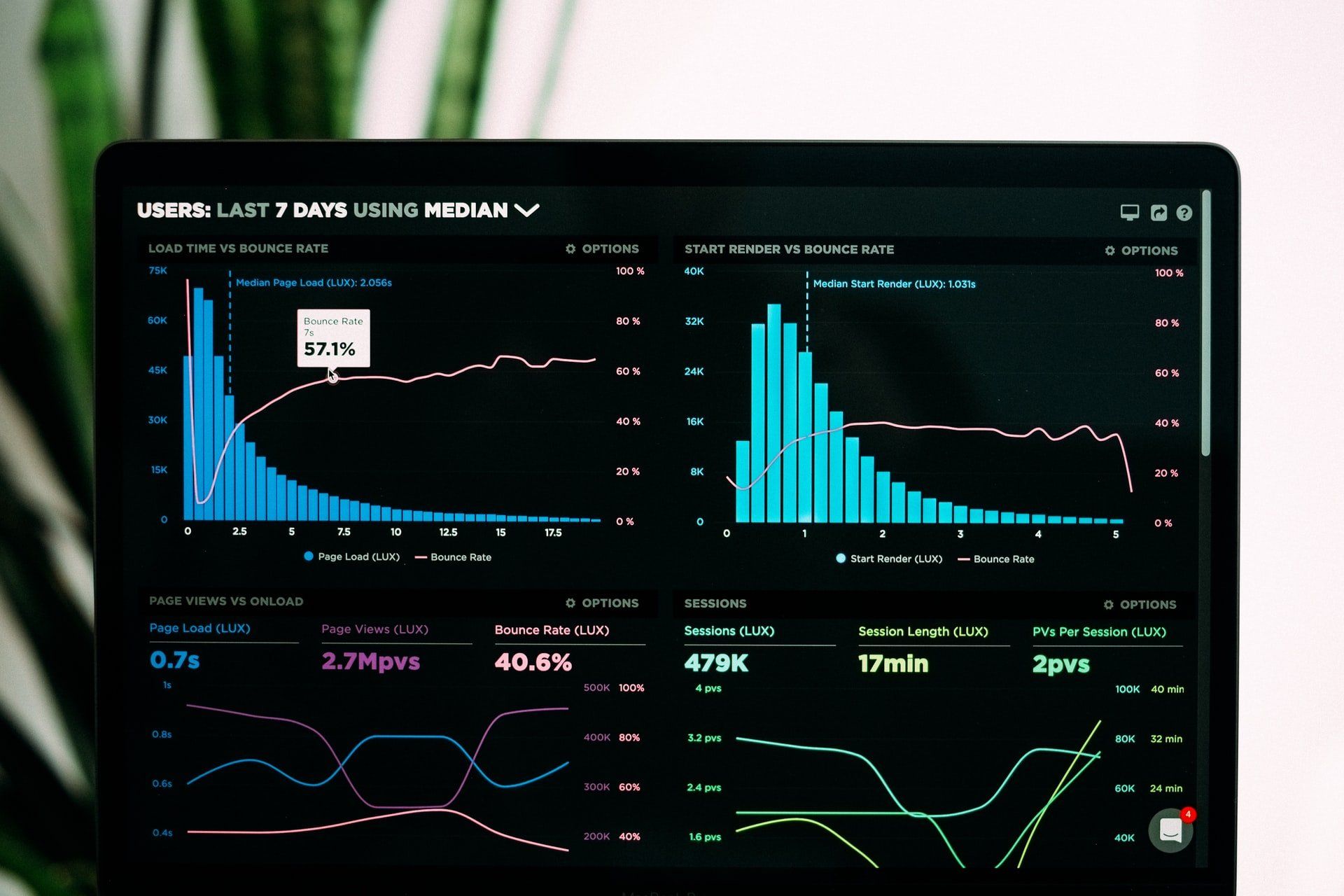8 Simple & Useful Metrics to Track Your Website Statistics & Get Insight

Whether you’re a digital marketing agency, a freelance web developer, content marketer, blogger or website owner, website metrics are a crucial part of the toolkit when it comes to knowing what’s going on with your site.
In this post, we’re going to walk through eight metrics to track in your website analytics that will help you get insight into your site's performance. If you are using Duda like us, these metrics are already built into your web statistics, but there are still plenty of ways to collect data that will give you a more accurate picture of what's actually going on with your website traffic. As you go through these eight metrics, you’ll see how they can help you build more effective content that attracts more attention from your audience. By the end of this post, you’ll know that these simple and easy to implement metrics can help you monitor, understand, and ultimately increase the performance of your website.

8 Important Website Metrics to Measure & Optimize
1. Pageviews
Page views are usually the first metrics you’ll want to pay attention to when evaluating your success.
A pageview is a snapshot of your site in real-time. Like a photo or video frame, pageviews are small snapshots that provide a view into how your site is performing. When you see a pageview of your site, you can see if there are any errors or if there are any broken links. It also shows you which pages on your site are being viewed the most. It is very easy to see which page of yours is the most popular. You can use Google Analytics to see pageviews on a daily basis and to track them by day, hour, and even minute. If your website has a large volume of traffic, you may want to check pageviews every hour. You can also use this information to optimize your site. If a page is getting a lot of traffic, but not converting, maybe you should consider changing the content or design of that page.
There’s nothing better than seeing that your site got a lot of visitors, and it’s even better if those visitors engaged with your content. To keep things in perspective, a page view doesn’t necessarily equal a sale. But it can be a good indicator that your site is useful to your audience. So make sure to keep an eye on page views, and know when you’ve hit a wall and need to do some tweaking.
2. Traffic from unique visitors
The next principle is called “unique visitors” and is often abbreviated as “unique.” Essentially, unique visitors are the people who visit your website, which gives you the ability to track whether or not you’re bringing in more or fewer customers with different campaigns. Unique visitors are the most accurate way to measure traffic, as opposed to total visits. Unique visitors are calculated in two ways: first, through a software program that collects data on the number of unique visitors every day, and second, using third-party web analytics tools that can analyze and count the number of unique visitors over a period of time.
3. Bounce rate
On any given site, the bounce rate refers to how often a visitor leaves the site within seconds after arriving. The best way to understand whether or not your landing page has a high bounce rate is to watch how many people are leaving it within 5 seconds. That’s the bounce rate. This is just one of many ways to test your landing pages, but one of the simplest to use. If you’re not seeing a high bounce rate, then there’s no need to worry. If you are, however, it’s a sign that something may be amiss with the design or content of your page.
High bounce rates indicate that users have a low level of trust in your product, or that your site doesn’t seem to offer anything worth staying for. The good news is that improving the quality of your content can drive down the bounce rate.
4. Time on page
The time on page metric measures how long it takes a visitor to read through your entire website. You may see it as a waste of time, but in reality it’s important because it can help you determine if you’re providing what your visitors need to keep them on your site. It can also help you measure the effectiveness of your content. When a visitor doesn’t stay long enough to read a page, it can tell you that the page isn’t providing what they needed.
5. Average session duration
An average session length is a simple way to track the average amount of time people spend on your site during a session. As the name implies, this metric shows you the average amount of time visitors spend on your site per visit. There are many other ways to measure your visitors’ online experience, but average session length is one of the easiest to calculate.
It’s important to track the average session duration because the more you can learn about the length of people’s browsing sessions, the better you can predict future behavior. The reason why knowing this is important is simple: if you know what the average session is, you can more accurately forecast the probability that someone will purchase something. If you know that the average session lasts 1 hour and 10 minutes, you can calculate how many minutes a customer will stay on your website.
6. Behavior flow
Behavior flow is the measure of the number of people who visit a site, click on specific links, and then complete a transaction. Basically, behavior flow is the act of taking an action online. It includes things like downloading files, registering for newsletters, clicking on ads, and making purchases. Behavior flow is one of the key metrics in analyzing user experience.
7. Conversion rate
Conversion rate is the percentage of people who click through to your landing page, complete your call to action, and take the next step toward purchasing your product or service. It is one of the easiest ways to know how well a campaign is doing. And it’s pretty straightforward, really: the higher the conversion rate, the more people are taking action. Conversion rates, therefore, give a good indication of whether a campaign is reaching its intended audience or not. When you see a low conversion rate, it might mean that something isn’t working or that there are a lot of distractions in the funnel.
You can test out your conversion rates by using Google Analytics or Adobe Site Catalyst to figure out what percentage of people who come to your site complete a particular action or perform another specific action. Once you have this data, you can compare it to other businesses that you’re interested in following.
8. Cart abandonment rate
A cart abandonment rate is a measurement of the percentage of customers who purchase items from an online store but fail to complete the checkout process. A low cart abandonment rate indicates that the website’s checkout flow is very easy to navigate. On the other hand, a high cart abandonment rate means that there are too many obstacles in the checkout process.
Key Takeaway
To run an effective website, you need to monitor and measure everything that happens on your site and track the results. A website analytics tool can help you measure traffic and conversion rates, understand user behavior, and optimize conversions, which means you can make better decisions and improve the user experience. So, before you dive into building your own website analytics tool, make sure you understand what the right questions to ask and what kind of data you need to collect.
CONTACT US to get a free consultation or quote on our fixed price support to keep your site online. With our support packages we're with you every step of the way. It's like having your own web support staff - from testing different strategies, tweaking and optimizing elements, measuring everything that happens on your site and more.
Ahumka Digital builds pixel perfect, fixed price websites for SMEs, as well as providing a suite of digital products including SEO, Social Media Management, Cybersecurity and more.












